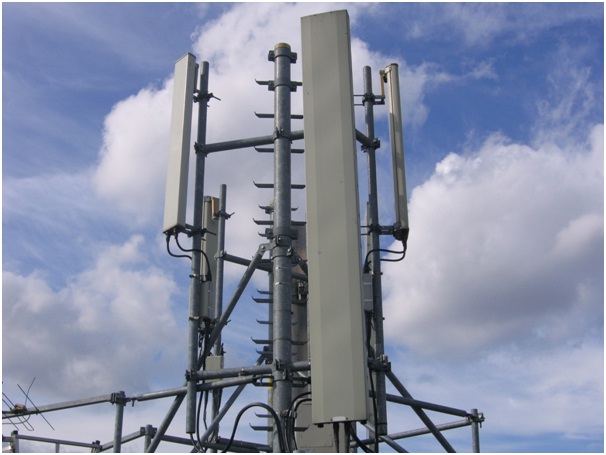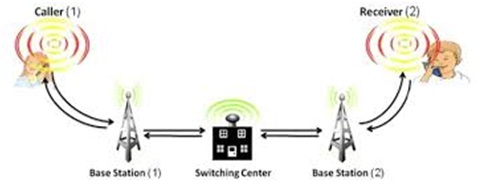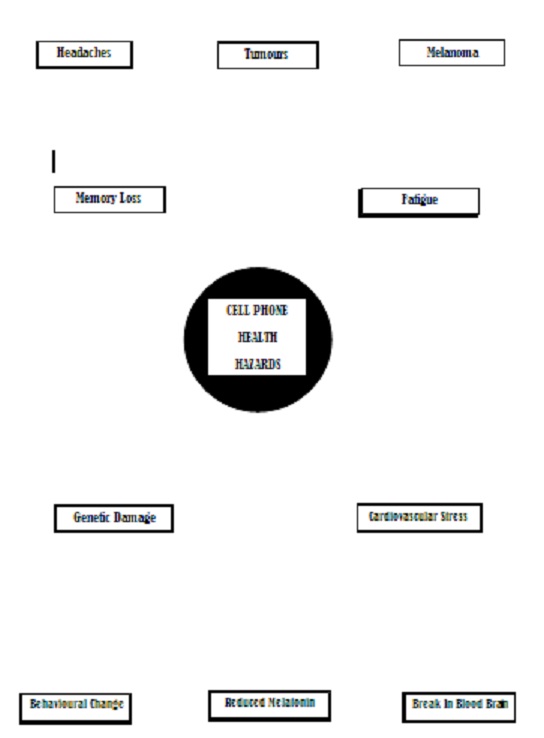





Published on Sep 12, 2023
A mobile phone is a phone that can make and receive telephone calls over a radio link while moving around a wide geographic area. It does so by connecting to a cellular network provided by amobile phone operator, allowing access to the public telephone network. By contrast, a cordless telephone is used only within the short range of a single, private base station.The first hand-held cell phone was demonstrated by John F. Mitchelland Martin Cooper of Motorola in 1973, using a handset weighing around 4.4 pounds (2 kg).In 1983, the DynaTAC 8000x was the first to be commercially available. From 1983 to 2014, worldwide mobile phone subscriptions grew from zero to over 7 billion, penetrating 100% of the global population and reaching the bottom of the economic pyramid. In 2014, the top cell phone manufacturers were Samsung, Nokia, Apple, and LG.
Early cell phones were just for talking. Gradually, features like voicemail were added, but the main purpose was talk. Eventually, cell phone manufacturers began to realize that they could integrate other technologies into their phone and expand its features. The earliest smartphones let users access email, and use the phone as a fax machine, pager, and address book.
Just in recent years, cell phone designs have actually started to become larger and simpler, making room for a larger screen and less buttons. Because phones have become mobile media devices, the most desirable aspect is a large, clear, high-definition screen for optimal web viewing. Even the keyboard is being taken away, replaced by a touch screen keyboard that only comes out when you need it
The common components found on all phones are:
1. A battery, providing the power source for the phone functions.
2. An input mechanism to allow the user to interact with the phone.
3. The most common input mechanism is a keypad, but touch screens are also found in most smartphones.
4. A screen which echoes the user's typing, displays text messages, contacts and more.
5. Basic mobile phone services to allow users to make calls and send text messages.
6. All GSM phones use a SIM card to allow an account to be swapped among devices. Some CDMA devices also have a similar card called a R-UIM.
7. Individual GSM, WCDMA, iDEN and some satellite phone devices are uniquely identified by an International Mobile Equipment Identity (IMEI) number.
The term base station is used in the context of mobile telephony, wireless computer networking and other wireless communications and in land surveying: in surveying it is a GPS receiver at a known position, while in wireless communications it is a transceiver connecting a number of other devices to one another and/or to a wider area. In mobile telephony it provides the connection between mobile phonesand the wider telephone network.

Another area of concern is the radiation emitted by the fixed infrastructure used in mobile telephony, such as base stations and their antennas, which provide the link to and from mobile phones. This is because, in contrast to mobile handsets, it is emitted continuously and is more powerful at close quarters. On the other hand, field intensities drop rapidly with distance away from the base of transmitters because of the attenuation of power with the square of distance.

One popular design of mobile phone antenna is the sector antenna, whose coverage is 120 degrees horizontally and about ∓5 degrees from the vertical. Because base stations operate at less than 100 watts, the radiation at ground level is much weaker than a cell phone due to the power relationship appropriate for that design of antenna. Base station emissions must comply with safety guidelines. Some countries, however (such as South Africa, for example), have no health regulations governing the placement of base stations.
The effect of mobile phone radiation on human health is a subject of interest and study worldwide, as a result of the increase in mobile phone usage throughout the world. As of November 2011, there were more than 6 billion subscriptions worldwide. Mobile phones use electromagnetic radiation in the microwave range. Other digital wireless systems, such as data communication networks, produce similar radiation.

In 2011, International Agency for Research on Cancer (IARC) classified mobile phone radiation as Group 2B - possibly carcinogenic (not Group 2A - probably carcinogenic - nor the dangerous Group 1). That means that there "could be some risk" of carcinogenicity, so additional research into the long-term, heavy use of mobile phones needs to be conducted. The WHO added in June 2011 that "to date, no adverse health effects have been established as being caused by mobile phone use", a point they reiterated in October 2014. Some national radiation advisory authorities have recommended measures to minimize exposure to their citizens as a precautionary approach.
• Blurry Vision
• Headaches
• Nausea
• Fatigue
• Neck Pain
• Memory Loss
• Leukaemia
• Rare Brain Cancers
• Enzyme Changes That Affect DNA
• Birth Defects
• Changes In Metabolism
• Increased Risk For Alzheimer’s Disease
• Increased Risk For Heart Conditions
• Neurological Hormone Changes Linked Impaired Brain Function
Part of the radio waves emitted by a mobile telephone handset are absorbed by the body. The radio waves emitted by a GSM handset are typically below a watt. The maximum power output from a mobile phone is regulated by the mobile phone standard and by the regulatory agencies in each country.
In most systems the cellphone and the base stationcheck reception quality and signal strength and the power level is increased or decreased automatically, within a certain span, to accommodate different situations, such as inside or outside of buildings and vehicles.
The rate at which energy is absorbed by the human body is measured by the Specific Absorption Rate (SAR), and its maximum levels for modern handsets have been set by governmental regulating agencies in many countries.
In the USA, the Federal Communications Commission (FCC) has set a SAR limit of 1.6 W/kg, averaged over a volume of 1 gram of tissue, for the head. In Europe, the limit is 2 W/kg, averaged over a volume of 10 grams of tissue. SAR data for specific mobile phones, along with other useful information, can be found directly on manufacturers' websites, as well as on third party web sites. It is worth noting that thermal radiation is not comparable to ionizing radiation in that it only increases the temperature in normal matter, it does not break molecular bonds or release electrons from their atoms.
One well-understood effect of microwave radiation is dielectric heating, in which any dielectric material (such as living tissue) is heated by rotations of polar molecules induced by the electromagnetic field. In the case of a person using a cell phone, most of the heating effect will occur at the surface of the head, causing its temperature to increase by a fraction of a degree. In this case, the level of temperature increase is an order of magnitude less than that obtained during the exposure of the head to direct sunlight. The brain's blood circulation is capable of disposing of excess heat by increasing local blood flow. However, the cornea of the eye does not have this temperature regulation mechanism and exposure of 2–3 hours duration has been reported to produce cataracts in rabbits' eyes at SAR values from 100–140 W/kg, which produced lenticular temperatures of 41 °C. This has known to cause premature cataract in humans.
A image via thermal scans showing heating of the facial skin after 4 hours of phone usage.
*Thermal effects have also known to cause harm to ear drum and impair hearing in the long term.
Swedish researchers from Lund University have studied the effects of mobile radiation on the brain. They found a leakage of albumin into the brain via a permeated blood–brain barrier. This confirms earlier work on the blood–brain barrier by Allan Frey, Oscar and Hawkins, and Albert and Kerns.
Prof Leszczynski of Finland's radiation and nuclear safety authority found that, at the maximum legal limit for mobile radiation, one protein in particular, HSP 27, was affected. HSP 27 played a critical role in the integrity of the blood-brain barrier.
A 2009 study, examined the effects of exposure to radiofrequency radiation (RFR) emitted by standard GSM cell phones on the cognitive functions of humans.
The study confirmed longer (slower) response times to a spatial working memory task when exposed to RFR from a standard GSM cellular phone placed next to the head of male subjects, and showed that longer duration of exposure to RFR may increase the effects on performance.
Right-handed subjects exposed to RFR on the left side of their head on average had significantly longer response times when compared to exposure to the right side and sham-exposure.
Some users of mobile handsets have reported feeling several unspecific symptoms during and after its use; ranging from burning and tingling sensations in the skin of the head and extremities, fatigue, sleep disturbances, dizziness, loss of mental attention, reaction times and memory retentiveness, headaches, malaise, tachycardia (heart palpitations), to disturbances of the digestive system. Reports have noted that all of these symptoms can also be attributed to stress and that current research cannot separate the symptoms from nocebo effects.
In December 2004, a pan-European study named REFLEX (Risk Evaluation of Potential Environmental Hazards from Low Energy Electromagnetic Field (EMF) Exposure Using Sensitive in vitro Methods), involving 12 collaborating laboratories in several countries showed some compelling evidence of DNA damage of cells in in-vitro cultures, when exposed between 0.3 to 2 watts/kg, whole-sample average. There were indications, but not rigorous evidence of other cell changes, including damage to chromosomes, alterations in the activity of certain genes and a boosted rate of cell division.
Australian research conducted in 2009, by subjecting in vitro samples of human spermatozoa to radio-frequency radiation at 1.8 GHz and specific absorption rates (SAR) of 0.4 to 27.5 W/kg showed a correlation between increasing SAR and decreased motility and vitality in sperm, increased oxidative stress and 8-Oxo-2'-deoxyguanosine markers, stimulating DNA base adduct formation and increased DNA fragmentation.
A study shows that exposure to excessive mobile radiation during pregnancy can cause a risk of ADHD in child.
Exposure to SAR values for long times for those men who keep the mobile phones in their lower pockets for most of the time, increases the temperature of groin and the radiation has known to cause considerable lowering of the sperm motility and vitality of sperm.
1. When on a call, use a wired headset or speakerphone mode. Use a Bluetooth headset, which emits a smaller amount of radiation, only when talking. When not using the headset, keep it off your body.
2. Place the mobile phone away from your body when on a call.
3. Do not carry mobile phones in pockets of pants or in shirts or bras. Use a belt holster designed to shield the body from radiation.
4. Avoid using a mobile phone in a moving car, train, bus, or in rural areas at some distance from a cell tower. Distance from a cell tower will increase the cell phone’s radiation output.
5. Turn the mobile phone off when you don't need to use it.
6. Use a corded landline phone instead of a wireless phone, which also emits radiation.
7. Avoid using mobile phone inside of buildings, particularly those with steel structures, which increases the device's radiation output because signals are not as strong.
8. Do not allow children, whose bodies are more vulnerable to absorbing radiation, to sleep with a cell phone beneath their pillow or keep it at the bedside.
9. Do not allow children under 18 to use a mobile phone except in emergencies.
10. When making a call, do not hold the phone to your ear until after the person on the other line answers. The device emits more radiation before a call goes through.
The conclusion drawn from the investigatory project finally states the mobile radiation is harmful to human health. The effects may not be noted almost immediately, but will be causing adverse effects to the present as well the future generations because of the ability of the radiations to effect and mutate human DNA which have a high potential to cause mutations and new diseases in the future generations. Mobile radiations present a very high risk of brain cancer and tumours in humans and most prominently in children below the age of 5 years.
Precautionary measure should be taken to protect one’s self and family and friends from the harmful effects of mobile radiation. j Mobile radiation might not seem harmful in almost immediate effects but is such a slow poison to cause harmful effects to us and even our future generations, in the long run.
• Biology textbook, NCERT
• www.wikipedia.com
• www.google/images.com
• www.NHLBI (National Heart, Lung, and Blood Institute).com